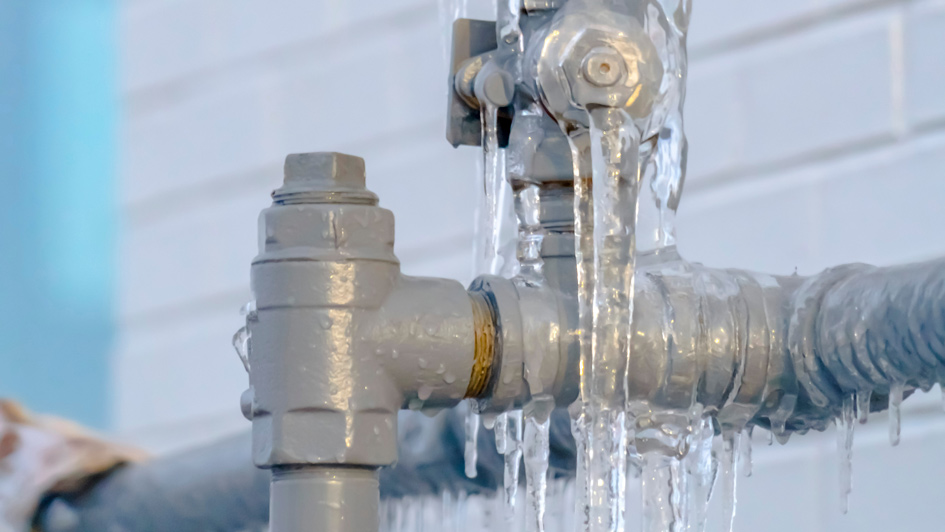
Snow-covered winter weather presents a great opportunity for fun activities like sledding down a nearby hill or snowball fights in the front yard. At the same time, winter weather can be hard on your home. Severely cold conditions can encourage the water lines in your plumbing to freeze and burst, which could result in severe water damage and lasting negative effects.
When your pipes are covered in ice, you should call a plumber in Lansing to resolve the issue. However, there’s multiple things you can attempt to prevent this from happening – and even a little prevention can go a long way.
What Pipes Are at More Risk of Freezing
The pipes at the highest risk of freezing are uninsulated water lines. Common locations for uncovered pipes are in attic crawlspaces, near exterior walls, in the basement or even running beneath a modular home. Water lines that are not properly insulated are at the greatest risk.
How to Keep Pipes from Freezing in Your Home
Thoroughly insulating uncovered water lines is a great first step to keeping your pipes safe. You’ll likely locate lots of these materials from the local plumbing company, and could also already have some someplace in your home.
Be mindful not to cover other flammable insulation materials where they might be caught on fire. If you don’t feel confident insulating the pipes by yourself, contact your local plumbing services professional in Lansing to do the job.
If you do prefer to insulate the pipes yourself, popular insulation materials for pipes are:
- Wraps or roll insulation: Most plumbers, hardware stores and large retailers provide insulation – usually fiberglass, foam wraps or pipe sleeves – that you can use to wrap or fit around your pipes. They are offered in numerous lengths and sizes to satisfy the needs of your home.
- Newspaper: In a pinch, newspaper can be used as insulation. If the weather is getting colder and you aren’t able to buy insulation soon enough, wrap uninsulated pipes in this.
- Towels or rags: If you aren’t able to buy insulation and don’t have any newspaper handy, wrapping especially vulnerable pipes with towels or clean rags as a last-ditch effort may be just enough to keep the cold air off the pipes.
Another preventative step you can attempt to prevent pipes from being covered in ice is to seal up any cracks that may let cold air in your home. Keep an eye on the window frames, which can draw in surprisingly powerful drafts. Not only should this help to keep your pipes from freezing, but it will have the additional benefit of making your home more energy efficient.
Five More Ways to Keep Your Pipes from Freezing:
- Open the cabinet doors. Opening the cabinet doors under the sinks and other spaces of your home with plumbing will permit more warm air from the rest of the room to flow near the pipes.
- Letting water drip. Keeping a flow of water by letting your faucets move even just a little can help thwart frozen pipes.
- Open interior doors. By opening doors in rooms or hallways, your home can be heated more consistently. This is mostly important if you struggle with a room that is frequently colder or hotter than the rest of the home.
- Close the garage door. The exception to the open doors recommendation is the garage door, which you should keep down – especially if your water lines run through the garage.
- Keep the heat consistent. Experts recommend setting the thermostat at a constant temperature and leaving it in place, rather than letting it get colder at night. Set it no cooler than 55 degrees.
How to Prevent Pipes from Freezing in an Unused Home
When you’re inside a house, it’s not difficult to realize when something isn't right. But what additional steps can you try to keep pipes from freezing in a vacant home or vacation home when the damages from a frozen pipe can remain unnoticed for a while?
As with the main residence, adding insulation to any exposed water lines, opening interior doors inside the home and winterizing the vacant home are the basic steps to try at first.
Alternative Steps to Stop Pipes from Freezing in a Vacant Home:
- Leave the heat on. Even though you aren't currently using the home, it’s best to leave the heat on – even if you adjust the thermostat down cooler than you would if you were there. As with a primary home, experts recommend keeping the temperature at no cooler than 55 degrees.
- Shut water off and drain the lines. If you’re going to be gone for a long time or are winterizing a seasonal cabin or cottage, shutting the water off to the house and draining the water out of the water lines is a good way to keep pipes from freezing and breaking. Try not to forget to clear the water out of your appliances, such as the hot water heater, as well as the toilets. See to it that you empty all the water from the system. If you are not sure of how to clear out the water from the pipes, or don’t feel comfortable performing it on your own, a plumber in Lansing will be glad to assist.




